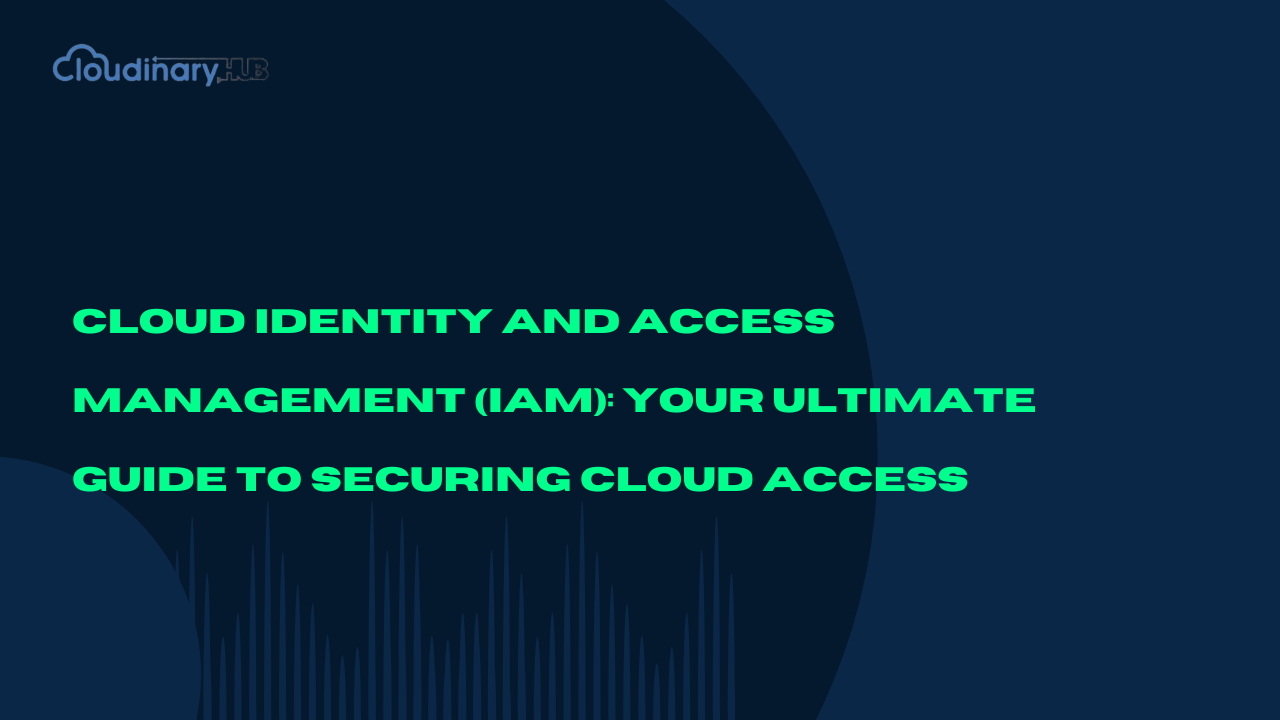Consider this for a moment—how many online accounts do you currently maintain?
Now, envision the implications if someone were to gain access to just one of your passwords. That singular breach could lead to a significant security crisis.
Now, extend this reasoning to organizations that handle sensitive information in the cloud. In the absence of adequate security measures, an ex-employee, a cybercriminal, or even a well-intentioned but negligent team member could gain unauthorized access to confidential data. The repercussions of such incidents can be dire—ranging from data breaches and regulatory penalties to a tarnished reputation.
This underscores the importance of Cloud Identity and Access Management (IAM), which serves as more than just another IT solution; it acts as the digital guardian of your organization. In this guide, we will elucidate the concept in a straightforward manner, devoid of unnecessary jargon. We will explore what IAM entails, its critical importance, best practices, and emerging trends, all while ensuring clarity.
What is Cloud Identity and Access Management (IAM)?
Fundamentally, IAM functions as a security gatekeeper for your cloud infrastructure. It guarantees that only authorized individuals gain access to the appropriate resources at the designated times. You can liken it to curating a guest list for an exclusive event—rather than VIPs, we are referring to employees, partners, and systems that require access to your organization’s cloud applications and data.
Here’s a quick breakdown of the key components:
| Component | What It Does |
| Authentication | Verifies a user’s identity before granting access (e.g., passwords, biometrics, multi-factor authentication). |
| Authorization | Determines what a user can or cannot do within a system based on their role and permissions. |
| User Management | Adds, modifies, and removes users as they join or leave the organization. |
| Access Control Policies | Defines who can access what and under what conditions. |
| Monitoring & Auditing | Logs user activities to detect suspicious behavior and ensure compliance. |
Why Should You Care About IAM?
The significance of Identity and Access Management (IAM) cannot be overstated. Simply providing employees with passwords is insufficient.
Consider a pertinent example.
Case Study: The Costly Oversight
A prominent financial services firm experienced a data breach due to the failure to revoke access credentials for a former employee. This oversight allowed hackers to gain unauthorized access to sensitive customer information, resulting in a $2 million penalty, a significant erosion of customer trust, and a public relations crisis.
Such a situation could have been averted with an effective IAM strategy.
The Benefits of a Robust IAM System:
- Safeguard Sensitive Information – Prevents unauthorized individuals from accessing confidential business data.
- Mitigate Insider Threats – Ensures that employees have access only to the information necessary for their roles.
- Maintain Compliance – Assists in adhering to industry regulations such as GDPR, HIPAA, and ISO 27001.
- Enhance Operational Efficiency – Streamlines access management processes, alleviating administrative burdens.
- Facilitate Zero Trust Security – Adopts a “never trust, always verify” approach to bolster security measures.
How to Implement a Strong IAM Strategy
Having established the importance of IAM, it is essential to discuss effective implementation strategies.
1. Implement Role-Based Access Control (RBAC)
Rather than granting uniform access to all employees, assign permissions based on specific job functions. For instance, an HR manager should not have the same access rights as a software developer.
2. Enforce Multi-Factor Authentication (MFA)
A single password is no longer sufficient. MFA introduces an additional security layer by requiring further verification, such as a fingerprint scan or a one-time code sent to a mobile device.
3. Adopt the Principle of Least Privilege (PoLP)
Provide employees with only the access necessary for their tasks—no more, no less. If an employee requires access to customer records only once a month, they should not have continuous access.
4. Automate User Provisioning and De-provisioning
Manually managing user access can be cumbersome. Automating these processes ensures that employees receive access promptly when needed and have it revoked immediately upon termination of their need
IAM Solutions: What Are Your Options?
If you’re wondering which IAM solution to use, here’s a quick comparison of some popular platforms:
| IAM Solution | Key Features |
| AWS IAM | Fine-grained access control for AWS cloud services. |
| Google Cloud IAM | Centralized identity and access management for Google Cloud. |
| Azure Active Directory (Azure AD) | Microsoft’s solution for securing enterprise applications. |
| Okta | Third-party IAM solution with seamless integrations. |
| IBM Cloud IAM | Role-based access control for IBM Cloud environments. |
The Future of IAM: What’s Next?
Identity and Access Management (IAM) is continuously advancing, influenced by several emerging trends:
1. AI-Enhanced IAM
Artificial intelligence is enabling organizations to identify atypical access behaviors, highlight potential security risks, and streamline access management processes.
2. Elimination of Passwords
The traditional use of passwords is being supplanted by biometric verification, smart cards, and cryptographic keys.
3. Distributed Identity Management
Blockchain-driven IAM solutions are empowering users with greater control over their digital identities, while simultaneously enhancing privacy and security.
Wrapping Up: Why IAM is a Must-Have
IAM transcends mere security; it encompasses efficiency, regulatory compliance, and safeguarding your organization against significant errors. A robust IAM strategy guarantees that access to your systems is granted solely to authorized individuals, at appropriate times, and for legitimate purposes.
Consider the following questions:
- Are you assured that each employee and vendor possesses only the necessary access?
- Is there a mechanism to revoke access when employees depart?
- Are you implementing multi-factor authentication?
- Are you consistently monitoring user activities?
If any of these questions leave you uncertain, it may be time to reassess your IAM approach.

